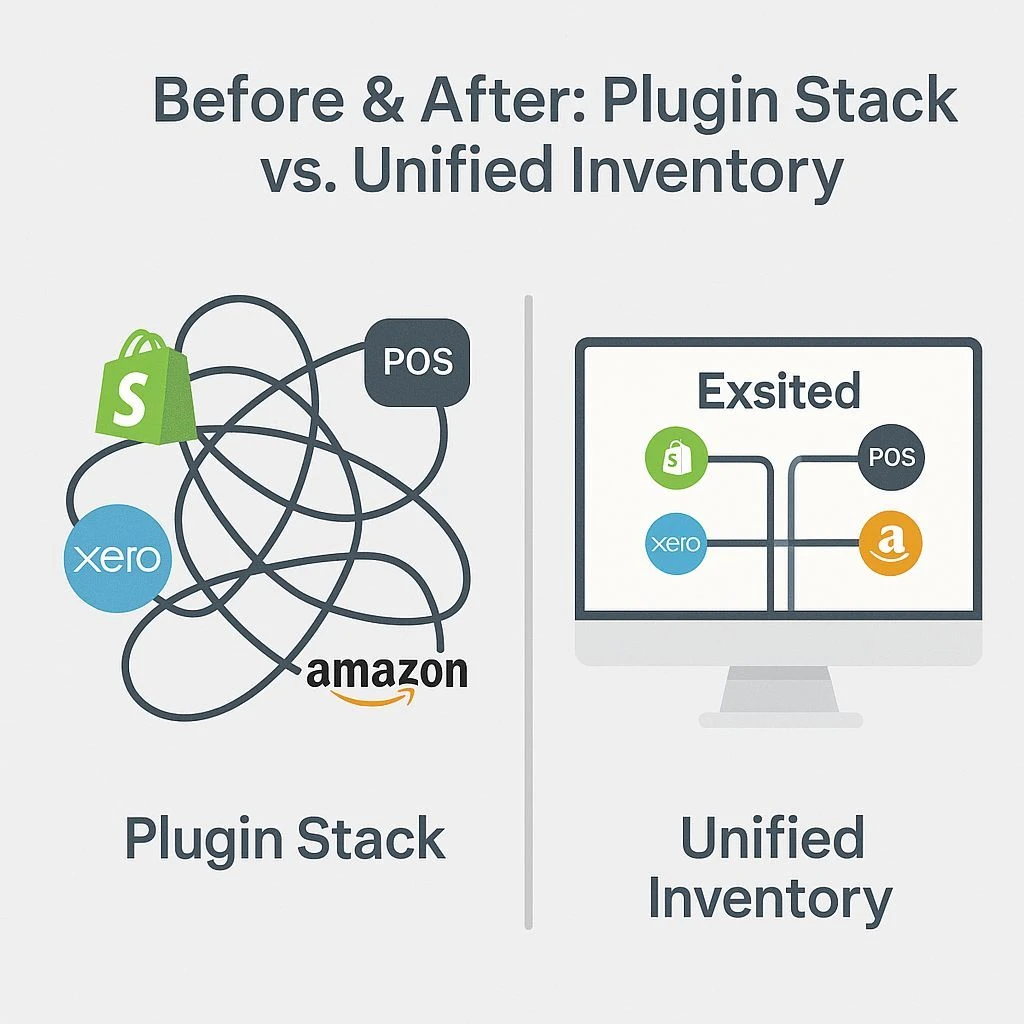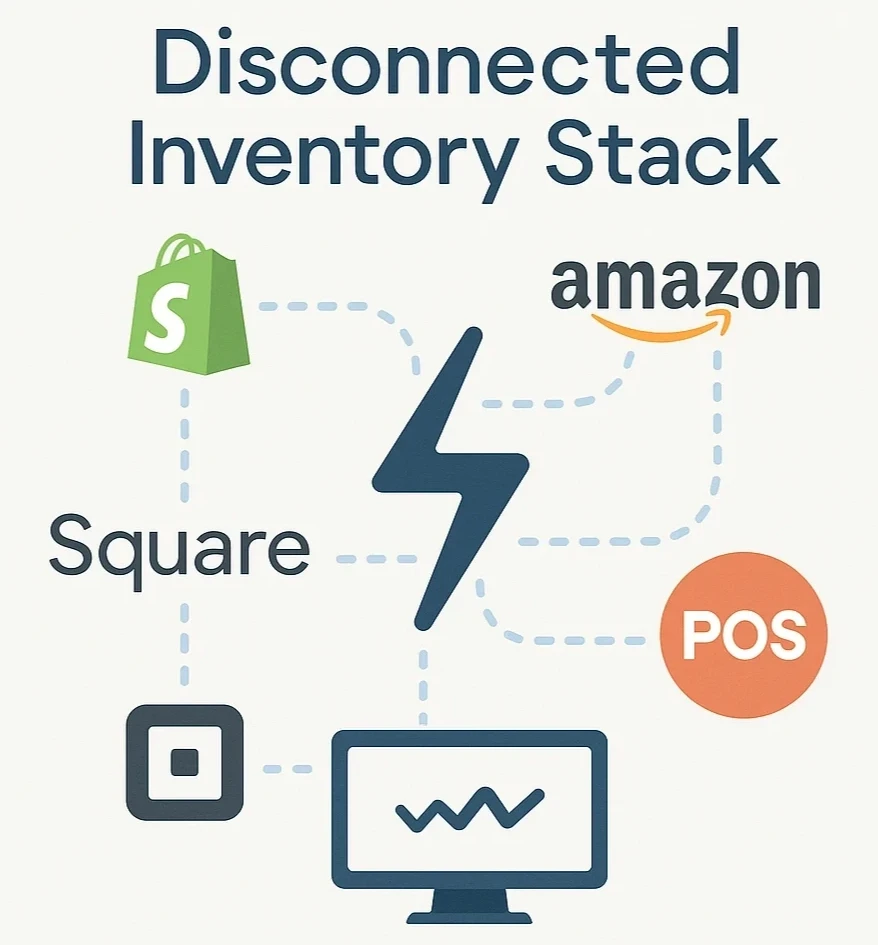Solving Inventory Chaos for Multi-Channel Retailers: A Smarter Way Forward
Selling across Shopify, Amazon, and POS? It’s common to run into stock mismatches, oversells, and fulfilment delays when each platform operates in a silo. This post breaks down why plugins often fall short, and what a better system looks like for inventory-led retailers.
The problem: Inventory that can’t keep up with growth
When you're running a multi-channel operation, the complexity scales faster than your team does.
- Stock updates lag between Amazon and your Shopify store.
- Your POS system sells an item already claimed online.
- Your warehouse staff are picking based on outdated counts.
- You’re stuck reconciling orders manually between Xero and your ecommerce platform every day.
Most retailers start with plugins to solve these pain points. But as soon as you grow - new SKUs, more warehouses, faster dispatch needs - those plugins hit their limit.
Real-world example:
A client I worked with was syncing Shopify, Amazon, and Square using three separate tools. Every time they launched a promo, they braced for oversells and refund emails. Their tech stack was duct-taped together and cracking under pressure.
Why this happens: Plugin patchworks can’t scale
As businesses expand across platforms like Shopify, Amazon, and POS systems, the complexity of inventory management increases. Without a centralized system, stock discrepancies become common, leading to overselling and customer dissatisfaction.
Moreover, manual tracking methods are inadequate for growing businesses. A study published in the International Journal of Business and Social Science notes that manual inventory practices are more susceptible to inaccuracies, leading to unnecessary losses in supplies, labor, customers, and revenue.
The financial implications are significant. IHL Group reports that inventory distortion costs global retailers approximately $1.77 trillion annually, underscoring the need for robust inventory management solutions.
Inventory at the core: A strategic advantage
When inventory systems fall out of sync, errors compound - oversells, refund requests, delayed fulfilment, and frustrated staff. For growing retailers, these aren’t isolated incidents, they’re signs of structural strain.
That’s precisely the gap Exsited was designed to fill.
Built for retailers expanding across platforms like Shopify, Amazon, and POS, Exsited puts inventory at the centre where it belongs. It offers:
- Real-time sync across online stores, marketplaces, and POS
- Multi-location tracking with automated stock adjustments
- Fulfilment workflows tailored to your operations
- Native accounting integrations to Xero, MYOB, and QuickBooks

What to watch for
If you're facing:
- Frequent stock discrepancies between platforms
- Manual reconciliation workarounds
- Delays due to siloed fulfilment processes
…it may be time to rethink your setup.
Regardless of the platform you choose, the principle remains the same: if your inventory systems can’t scale, neither can your business.
Explore Exsited’s inventory syncing and fulfilment capabilities → Learn more










